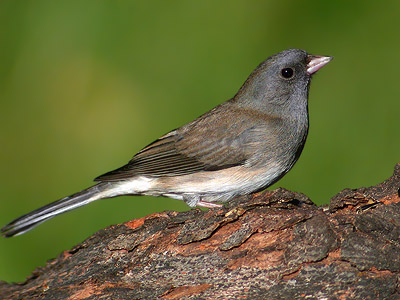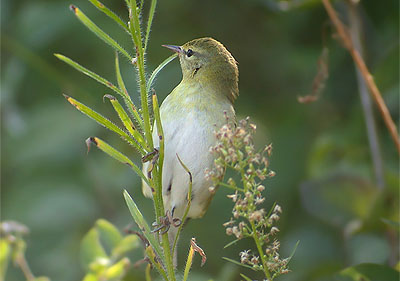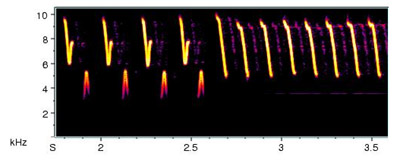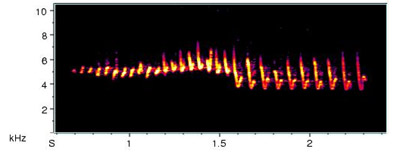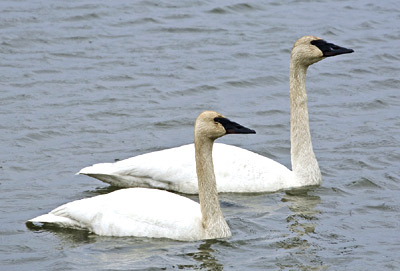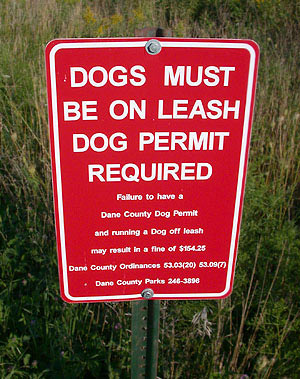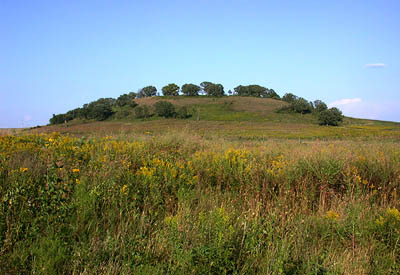
One day this past spring I was driving past the prairie restoration area of Pheasant Branch Conservancy and noticed someone using a chainsaw to cut down small trees. Out of curiosity, I pulled over to ask about it. It turned out I knew the volunteer worker and he was cutting down certain trees to eliminate peripheral perches hawks and falcons might utilize to target nesting grassland songbird species. Whether or not you agree with this strategy for protecting grassland songbirds, it's a particularly specific attention to detail.
The
Friends of Pheasant Branch,
Dane County Parks and a host of other advocacy/nature groups are very serious about restoring the prairie and justifiably take great pride in their accomplishments. Countless hours and resources have been poured into the project and the effect of their efforts hasn't gone unnoticed by me. The prairie and oak savanna have attracted
Dickcissels, Bobolinks, Eastern Meadowlarks, Eastern Kingbirds, Clay-colored Sparrows and more. My observations during the summer months revealed over 40 bird species on territory. Over the past few years this area has become one of favorite birding haunts and also where I conduct the majority of my sparrow photography.
While birding at the prairie one day this past summer, I bumped into Wayne Pauly, Dane County Naturalist, who has been instrumental in the Pheasant Branch prairie restoration. Wayne isn't a birder and I lack detailed knowledge regarding prairie plant species and habitats (I'm working on it), but it was interesting for him to learn
which bird species I've seen
where – a veritable meter for his progress. We spoke for nearly an hour and eventually I brought up my curiosity about the tree cutting in the context on his feelings toward dog owners allowing pets to run off leash on the prairie. Why bother with removing a few trees when nothing is being done about off leash dogs?
As you enter the trail, there is an informational sign at the parking lot, with bold, bright, large letters stating pets must be leashed at all times. But what is clearly a directive is often taken only as a suggestion and subsequently ignored by many dog owners. The rapid growth of housing developments surrounding the conservancy means more people, and more pet owners using it. Hey, that's just fine...I want them to to use and enjoy it. I want them to be advocates for protecting the land against future development, but how about following a few easy rules? Or just one? Apparently, the temptation is too great for some dog owners.
I used to confront them – those who allowed their pets to run off leash on the prairie. I would tell them about the restoration efforts and the type of birds nesting on the prairie. When met with stark apathy, I would cite the leash ordinance and also the availability of dedicated dog exercise area less than a mile away. Invariably, there's always one reason or another why they are exempt from the rules. "
My dog doesn't kill things." "
I can control my dog." "
I know about the ordinance, but I just can't deny my dog the enjoyment of running free." "
I didn't see the sign." "
The dog park is too far away to walk to."
Comments like these represent some of the nicer things people have said. Several of
Middleton's "Good Neighbors" have been downright hostile toward me – colorful expletives and all. But never once has anyone replied with, "
Thank you for pointing that out to me. I'm grateful for this information and will gladly walk my dog through the conservancy on a leash from now on." (I can dream, can't I?) Nobody likes being told they're doing something wrong, especially from someone who isn't in an official capacity to enforce the ordinance being cited to them. They take it so personally when I do not mean it personally – my interest is strictly about protecting birds of the conservancy.
Just recently, Dane County Parks put up new signs along the prairie's trails that read, "Dogs must be on leash dog permit required - failure to have a Dane County Dog Permit and running a Dog off leash may result in a fine of $154.25." My understanding is that a number of tickets have already been issued since the signs went up sometime late summer. There are still dog owners ignoring the new signs, but it has drastically decreased. Back to my conversation with Wayne, we agreed a greater threat exists for grassland birds – feral cats, and cat owners who allow their pets to roam freely on conservancy lands.
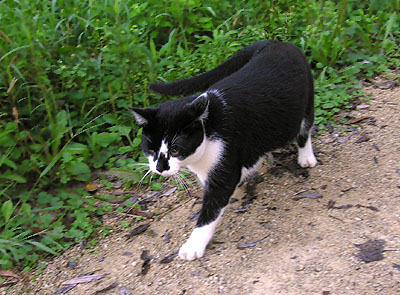
This is Bucky - one of the friendliest cats I've come across in Pheasant Branch. When I first met Bucky, I wasn't aware of his name because he had no tags, but more on that in a moment. Sometimes Bucky would follow me along the stream corridor trail and keep me company while I watched warblers, vireos and flycatchers during fall migration. Though I never actually saw Bucky with a dead bird, kill a bird or any other critter, I have observed him stalking House Wrens and Song Sparrows. When birds would vocalize to the point of agitation, I would intervene and shoo Bucky way from the habitat edge.
At first I didn't know if Bucky was a lost cat, abandoned cat or what. Given his friendly disposition toward myself and other birders, I suspected he had to be someone's pet. After seeing him in the conservancy for several days, Bucky ended up taking a trip to the Dane County Humane Society. A few days later his owner posted "lost cat" signs near the trail entrances. Bucky's time away from the conservancy was actually quite an adventure, but in the interest of brevity and protecting the innocent, I won't go into further detail.
Bucky's owner was eventually notified where he could pick him up, advised of leash ordinances, but only a few days later Bucky was back roaming the conservancy trails...wearing a tagged collar with a phone number. Bucky isn't a bad kitty, but his owner exercises poor judgment. While Bucky is a very lovable cat, sadly I fear his fate will be that of other cats I see along the road. Bucky does not belong in the conservancy, he belongs inside a house where he isn't a threat to protected migratory songbirds and won't end up as roadkill or a meal for Great Horned Owls.
Take a look at this story:
Golden Gate National Park dog leash dispute haltedWhat bothers me most about this article isn't necessarily the story itself, but the snippy blurb appearing on the window title at the top. Do you see it? "
Dog lovers win temporary reprieve from nimby group." Do they mean the Golden Gate Audubon Society? Center for Biological Diversity? I despise the use of "nimby" as a legitimate argument, as if the pejorative represents a reasoned response. "
Oh, it's one of those noisy nimby groups. A nimby group? Well, clearly they're wrong!" It's just like the minority of pet owners at Pheasant Branch - they upset easily when there's a perceived imposition on letting them do whatever they want in parks/conservancy lands. It's precisely my contention that such lands are not my backyard, they're not
anyone's backyard, but the homes of aforementioned birds and other native wildlife. Hey, I love cats and dogs, too, they just
don't belong off leash where they have the potential to harm birds and other sensitive wildlife.
I admire
The Nature Conservancy's stance on protecting sensitive natural areas. For example, at Spring Green Prairie, it's clearly posted as you enter the trail that if people do not follow the rules, public access to the prairie will be closed. Therein lies the difference between a true wildlife conservancy and a public park that pretends to be one. The compromise is so simple – leashes. Need to run your dog? Go to the dog park – it's just another mile down the road. It's great that the public supports a place like Pheasant Branch Conservancy, and maybe Dane County Parks needs to educate a little better on why it's important to protect the prairie and its wild inhabitants. Both sides need to respect the other, but the prairie birds deserve to carry out their business without having to worry about a cold, wet nose sniffing through the grass.















